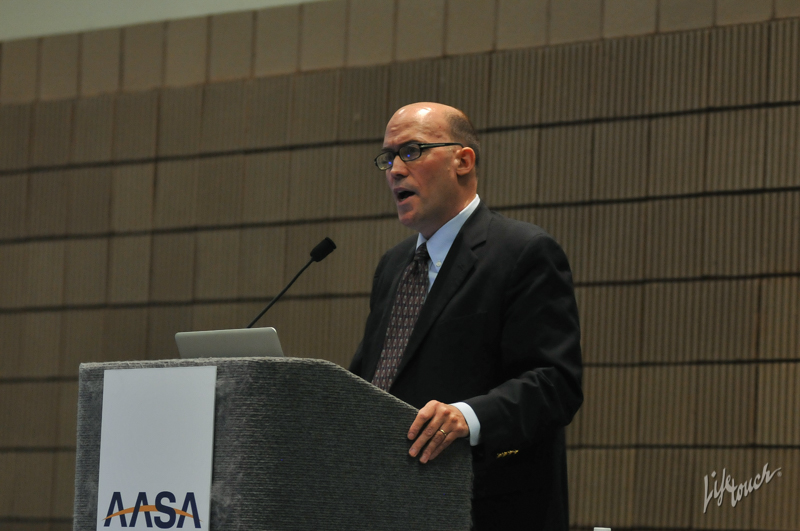“How can greater choice within the public school system be used to promote strong racially and economically integrated education?” AASA Executive Director Dan Domenech raised that question before about 40 education leaders at the annual AASA Federal Relations Luncheon on Thursday at the association’s annual conference in New Orleans.
Luckily, Richard D. Kahlenberg was in the room to answer that tough query.
A senior fellow at the Washington-based Century Foundation, Kahlenberg has been writing about public school issues for more than 20 years. He was invited to talk about private school vouchers, a timely topic ranking high atop AASA’s legislative agenda, especially with the new administration.
Kahlenberg shared five reasons why privatization is harmful. Some were quite obvious to the superintendents: These measures diverts scarce funds from public schools; private schools are less accountable in terms of student test results and protecting students’ civil rights; it could further segregate students by race and class; private schools do not have a good track record on student outcomes; and private schools are not designed to promote democratic citizenship.
About $20 billion have been pledged to school choice options by President Trump, notably private school vouchers and tax credits.
What’s a way forward? Kahlenberg argued there needs to be more than just a “defense of the status quo,” and he encouraged his audience to consider options that allow for public school choice.
“If we just say we’re going to improve the public schools over the long haul, it doesn’t answer convincingly the sympathetic argument of individual students,” said Kahlenberg. “There are a number of districts that are using school choice to promote efforts to integrate students within the public school system – choice to provide students the opportunity to attend schools where the rich and poor can come together.”
Socioeconomic school integration, which means providing the opportunity for the rich and the poor to learn together, has grown over time and should be a viable option for school leaders to promote choice within their public school districts as means for creating high quality integrated schools. It already is in states such as Illinois, Maryland, Massachusetts and New York.
To further his case for public school choice, Kahlenberg shared a slide, which listed incentives for integration. The list suggested polling parents; building partnerships between magnet schools and well-regarded institutions such as universities, museums, or military facilities; drawing in parents who would like their children to attend a school nearby where they work; and franchising popular over-chosen schools.
“Democracy ultimately depends on this idea that we are all equal and we all have an equal vote in deciding how this country should run,” said Kahlenberg. “That message is undercut in segregated schools, where there’s a privilege class that has sent the message every day that it is better.”
“The bottom line is: Yes, Betsy DeVos is right when she says ‘poor kids stuck in bad schools need something better,’ but let’s do it in a way that promotes our democracy rather than undercutting it.”
(By Deanna Atkins, online technologies and advocacy specialist at AASA)

